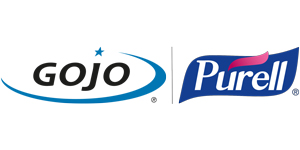Working life is slowly returning to normal, but only under strict hygiene conditions. Hand hygiene in particular plays a very important role. Here are a few things that employees and employers should keep in mind as they return to the workplace.
Many employees are beginning to return to the office
Many companies are bringing their employees back to the office - mostly gradually and voluntarily. Although the Coronavirus crisis has shown that working from home works better than expected, the majority of companies prefers a mixture of working at the office and working at home. This is a very good approach from an infection prevention perspective. If employees are no longer present in their full numbers, distance and hygiene rules at the workplace can be fulfilled more easily and effectively.
Hygiene in the office
But there’s more to stopping Coronavirus than maintaining social distance. The cleanliness of the hands is also critical for good hygiene conditions at the office. According to the World Health Organization, up to 80 percent of infectious diseases are transferred by the hands.
Did you know that contaminated hands can transfer some viruses to up to seven surfaces where they can potentially be picked up by more people?1 In fact up to 14 people can be contaminated by touching the same object.2
The best way to get rid of germs is to wash your hands with soap. But only if your fingers, your palms and the backs your hands are properly wet and are rubbed for a good 20 seconds germs will really be rinsed off. It is also important to clean the spaces between the fingers, the fingertips and the nails.
However, most people spend far too little time washing their hands. According to a study by researchers from Heidelberg, Germany, about seven percent of men and women do not wash their hands at all. 27 percent wash their hands only with water, and around 58 percent use soap and water, but not with the necessary thoroughness. Only about 8 percent clean their hands as recommended.
Hand sanitisers: an optimal addition to hand washing
The shocking statistics around hand wash thoroughness is why hand sanitisers are the optimal supplement to hand washing. Hand sanitising is quick to do and can be practiced afterwards and in every other situation. The hands have only to be moistened with the hand sanitiser and rubbed until they are dry. This routine contributes to a hygienic office and prevents the spread of germs around a company very effectively.
Hand sanitiser dispensers should be mounted at a height where they can be easily reached by employees. It is also important that the dispensers are designed to prevent any splashes from falling on the floor. The slippery nature of the product means that if any gets on the floor, it could lead to accidents. Due to this we advise you to use a dispenser system with a drip tray.
The right equipment for optimal hygiene at the office
In addition to wall-mounted dispensers, you can offer small bottles to employees. They can put them in their pockets or attach them to their clothing with a clip. The optimal hand sanitising office kit also includes pump bottles on desks and sanitising wipes for cleaning work items that are used by several employees.
Here are some tips on where dispenser systems and further hand sanitising products should be placed:
Sanitary facilities and washrooms
- Hand sanitiser dispenser at the exit
Canteens, restaurants, staff rooms
- Hand sanitiser dispenser at the entrance and exit
- Pump bottles with hand sanitisers on the tables
- Disinfectant soaps, hand sanitiser dispensers near wash basins and sinks
At the office
- Antibacterial hygiene wipes and pump bottles with hand sanitiser on desks and in all meeting rooms
In company vehicles
- Antibacterial hygiene wipes in cars and buses
Areas with customer traffic
- Mobile hand sanitiserdispensers at entrances and exits
- Pump bottles with hand sanitiser on tables
- Mobile hand sanitiser dispensers in waiting areas
The perfect placement of hand hygiene solutions contributes to good hygiene standards in their offices and significantly reduce the risk of pathogen transmission.
Downloads_________________________________________
Download our checklist for better hygiene standards at offices here.
Here you can find a plan for the perfect placement of hand disinfectant dispensers and disinfecting wipes in offices.
Sources:
1WHO Guidelines on Hand Hygiene in Health Care: First Global Patient Safety Challenge Clean Care Is Safer Care. Geneva: World Health Organization; 2009. 7, Transmission of pathogens by hands.
2Barker J, Vipond IB, Bloomfield SF. J Hosp Infect 2004, 58:42-49













